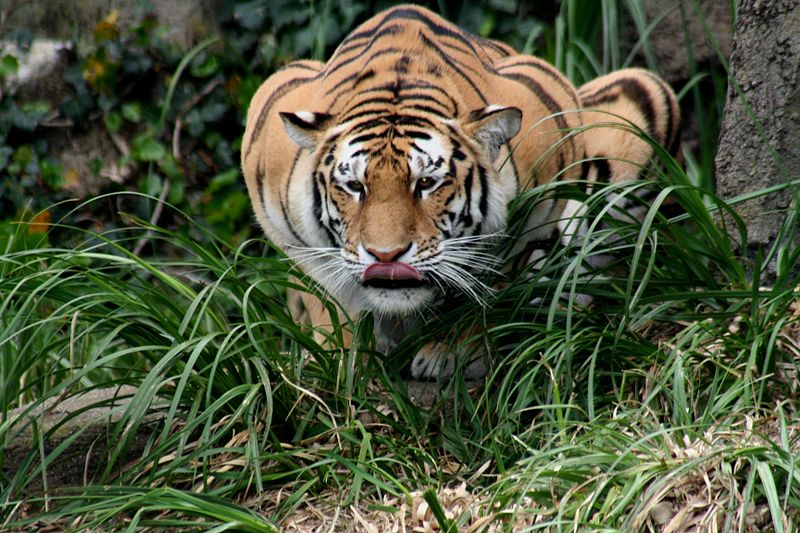Tiger Habitat Flushed Away
Of the approximately 130,000km2 remaining habitat for tigers, only one third has some sort of protection from development and logging, but it seems that even in protected areas habitat destruction continues.
 Image: I, Kevin1243 [GFDL (http://www.gnu.org/copyleft/fdl.html), CC-BY-SA-3.0 (http://creativecommons.org/licenses/by-sa/3.0/) or CC-BY-SA-2.5-2.0-1.0 (http://creativecommons.org/licenses/by-sa/2.5-2.0-1.0)], via Wikimedia Commons
Image: I, Kevin1243 [GFDL (http://www.gnu.org/copyleft/fdl.html), CC-BY-SA-3.0 (http://creativecommons.org/licenses/by-sa/3.0/) or CC-BY-SA-2.5-2.0-1.0 (http://creativecommons.org/licenses/by-sa/2.5-2.0-1.0)], via Wikimedia Commons The Sumatran tiger, the smallest of the tiger subspecies, was once so numerous and bold that Dutch colonists in the early 20th Century reported that they would regularly enter the planter’s estate house compounds. Today however, the story is a different one. It is listed as critically endangered on the IUCN RedList, with recent estimates suggesting that there are between 441 and 679 individuals left in the wild.
Poaching for trade in tiger body parts is a huge threat to the survival of the Sumatran tiger, accounting for 78% of all tiger deaths according to Traffic. Habitat destruction is also taking its toll. Not only are tiger numbers reduced, prey animals are too. In search of food and new territories tigers move into areas where they come into contact with people, a situation that may occasionally end badly for a person, but almost always ends badly for the tiger.
Of the approximately 130,000km2 remaining habitat for tigers, only one third has some sort of protection from development and logging, but it seems that even in protected areas habitat destruction continues. The Senepis Tiger Sanctuary, owned by Asia Pulp & Paper (APP), is heavily promoted to clients and media to demonstrate APP’s conservation efforts in Indonesia. However, Eyes on the Forest, a coalition of Indonesian environmental organisations released evidence that the sanctuary is subject to aggressive deforestation.
Products made using fibres from APP include coffee cups and toilet paper. APP is currently the fifth largest tissue producer in the world, and since 1984 almost 5 million acres of tropical forest in Sumatra have been used for paper pulp. A report from WWF suggests that by purchasing products from APP, American consumers are “inadvertently contributing” to the destruction of tiger habitat. WWF contacted 20 US grocery chains who stock APP products; so far 8 have agreed to stop selling them. Tesco, Lego and Adidas have also agreed, and last year toymaker Mattel announced that it would no longer package Barbie dolls with paper products made by APP.
Deforestation also threatens orang-utan, clouded leopards and Sumatran rhinoceros. Unless this destruction is reduced, it seems likely that the Sumatran tiger will follow its Javan and Balinese relatives into extinction oblivion.




No comments yet.